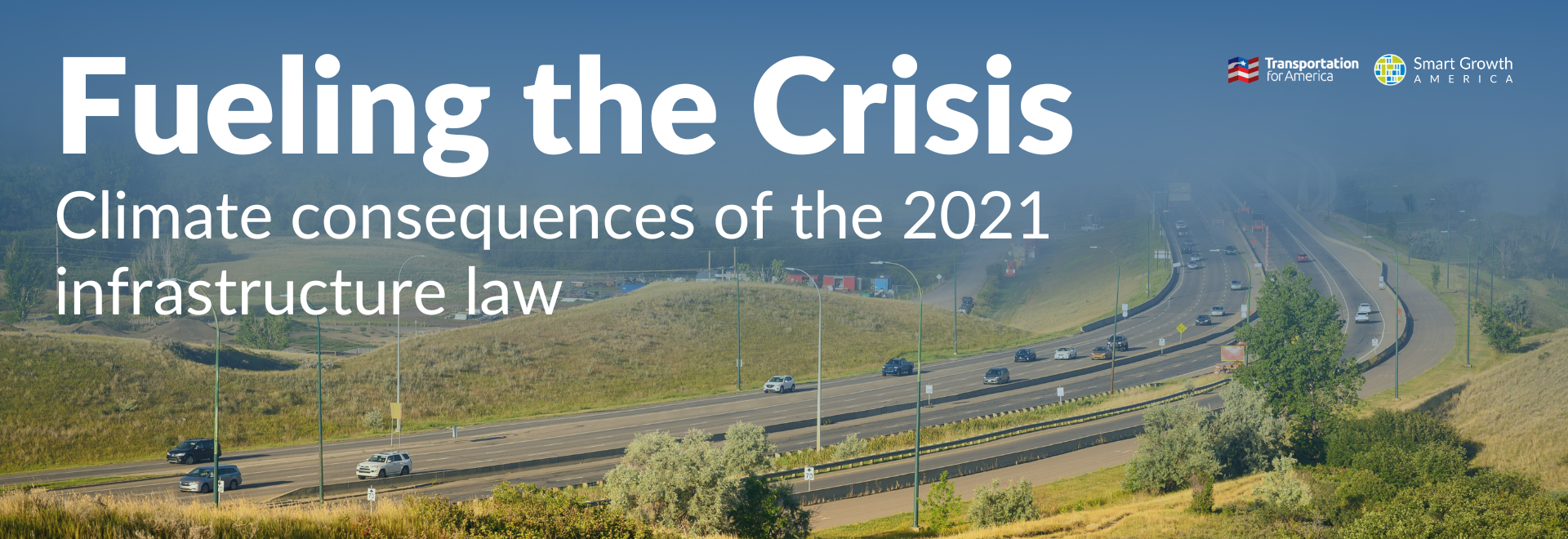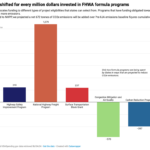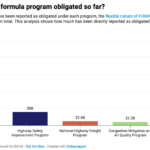Formula funding
The National Highway Performance Program is the largest federal highway formula program, making up over half of all federal highway formula apportionments that states can expect from the IIJA. Its name is also deceptive: it is extremely flexible and can be used not just to prioritize highways, but projects across a range of types that can reduce emissions, including transit projects along limited access highways. Going further, up to 50% of program funding can be “flexed out” to tackle priorities set in other programs. For instance, funds from the National Highway Performance Program, which has broad eligibilities to fund highway construction and maintenance, could be moved to the Congestion Mitigation Air Quality Program or Carbon Reduction Program, which can fund a wide range of emissions reducing projects including bikeshare systems, transit, heavy-duty vehicle electrification, and more. However, states have so far used NHPP obligations to fund over $22 billion worth of road capacity increases highway expansion projects.
Most would choose not to take out a new loan when they’re unsure if they can plan to pay off existing interest payments. When it comes to federal funds from the IIJA, state DOTs do not have to worry about long term financial sustainability. Provisions from the INVEST Act (the House’s proposal that was ultimately replaced by the IIJA) would have limited states’ ability to use the largest program’s funds to widen or build new roads unless they demonstrated progress toward fixing their existing system, considered cheaper or more efficient options to move people or freight, and actually had a plan to keep the new project in a state of good repair continuously. Had these common sense reforms proposed in the House’s INVEST Act been passed in the IIJA, the NHPP could have been an effective program that kept America’s roads and bridges in a responsible and safe state of good repair. Instead, the program has by far the worst impact on the climate out of any FHWA program, creating new emissions and increasing the cost of infrastructure that states will have to pay to maintain for decades into the future.
The only other program that builds more highways and expands more roads (thus inducing more emissions) per dollar apportioned to the program is the National Highway Freight Program (NHFP), though it is significantly smaller in terms of overall funding than NHPP. Project selection priorities need to shift at the programmatic level to ensure that overall goals to reduce transportation emissions align with selected capital projects.
While different programs have different project eligibilities, formula funding under the IIJA gave states unprecedented opportunities for flexibility within each program. The National Highway Performance Program and National Highway Freight Program are leading in terms of obligations to emissions increasing highway projects.
While data from USASpending.gov shows funds that have been reported as obligated under each program, the flexible nature of FHWA formula programs and data limitations obscures how much funding has been shifted out of a given program in total. Access to internal FHWA data would allow for an analysis of how funds have been shifted to transit programs. Previous analyses found that most states transferred between 4% and 10% of their FHWA formula funds to the Federal Transit Administration, though an analysis of transfers made since the passage of the IIJA is not available.
The Surface Transportation Block Grant Program is among the fastest to report obligations compared to total FY22-FY24 apportionments, followed by the Highway Safety Improvement Program and National Highway Performance Program. However, programs that are designed to reduce emissions and improve climate resilience (the Congestion Mitigation and Air Quality Program (CMAQ), and the new Carbon Reduction Program (CRP) and Promoting Resilient Operations for Transformative, Efficient, and Cost-Saving Transportation Program (PROTECT)), are the slowest to obligate.
Based on the proportion of formula funds that remain, and how states have spent their funds in the past, emissions are likely to continue to grow as they have under the first portion of the IIJA. For every million dollars invested in the National Highway Performance Program, there is an increase of 672 tonnes of CO2e added cumulatively over pre-IIJA baseline levels through 2040, based on current trends. The NHPP program has up to $93 billion in funding remaining (depending on how much funding has been flexed out or into the program).
Why are we expanding road capacity under emissions-reduction, resilience, and safety programs?
Supposedly climate-friendly programs are supporting projects that will worsen the impacts of climate change.
Projecting future spending
This analysis evaluates obligations made between FY 2022 to FY 2024, representing approximately 42% of FHWA formula funds apportioned between FY 2022 to FY 2026. What might happen with the rest of the approximately $270 billion in formula funds given to states under the IIJA?









